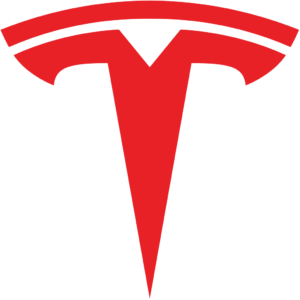How Desperation Stimulates Short-term Rational Thinking…. and Long-term Demise
NOTE: This blog was written in the first two weeks of April, 2020. As such, it cannot and does not anticipate the full effect of the COVID-19 pandemic on the US and global auto industry. Stay tuned…..
In this series of eleven blogs, we will discuss the current situation in Detroit with the traditional “Big 3” – Ford, GM, and Fiat Chrysler (FCAU) – and their upstart rival Tesla. The series will end with specific recommendations as to what the Big 3 must do to survive against Tesla and other electric vehicle manufacturers. The eleven blogs in this series are:
- The Detroit Big 3’s current woes, Part 1
- The Detroit Big 3’s current woes, Part 2
- A brief history of the Big 3’s electric vehicle attempts, Part 1, GM
- A brief history of the Big 3’s electric vehicle attempts, Part 2, Ford
- A brief history of the Big 3’s electric vehicle attempts, Part 3, FCAU and General Big 3 Summary
- What’s so special about Tesla — Part 1, financials and battery performance
- What’s so special about Tesla – Part 2, manufacturing, and cost/time reduction
- What’s so special about Tesla – Part 3, coming Tesla models, etc.
- What’s so special about Tesla – Part 4, Tesla versus emerging competitors
- Why Tesla so successful……..the Company; the Cars
- What’s a poor Big 3 auto company to do now?
The Detroit Big 3’s current woes, Part 2:
Today’s Detroit auto industry executives apparently have never heard of Tony Seba, author of Clean Disruption of Energy and Transportation, published in 2014. Tony has been a featured speaker at many business strategy conferences around the world. Global auto industry executives have had six years to listen to and learn from this great thinker. They either aren’t acquainted with him and his brilliant material (shame on them), or they don’t believe him (equally shameful, in view of the compelling evidence he documents and how his predictions are bearing out).
Seba’s message is that a confluence of accelerating technological advances, newly evolving business models, and abundant, clean, and cheap energy are going to radically disrupt the automotive, oil and gas, and electrical power generation industries. These disruptive forces have been gaining steam for a decade or more and will culminate around 2021 in one or more “tipping points” that will destroy many conventional and previously dominant companies in US and global industries.
Seba points out that once this tipping point is reached, the disruption of each industry will proceed blindingly fast – in less than a decade. Detroit executives particularly and many executives in global industries just don’t understand the scope, speed, or impact of the forthcoming industrial upheaval.
The essential truth is that in any industry old habits and traditions die hard – particularly in Detroit’s Big 3 companies. Such long-established companies have long-term often second or third generation employees who are 20 to 40-year company veterans. They are comfortable with well-established daily meeting schedules and routines, and committees, in addition to stifling inbred cultures where preservation of your job (not your well-formed candid opinion) comes first. Woe be to the newcomer with new ideas! “Once a GM guy, always a GM guy”.
Rarely is there any cross-company or cross-industry fertilization. Big 3 executives simply don’t know any other way of doing what they do. Their work/life traditions are burned into their DNA. They are agonizingly slow-to-incapable of rapid change, of proactively searching for and absorbing new ideas, of quickly adopting (or inventing!) new technologies, and of implementing new time and cost-saving and customer-pleasing business processes.
Continual improvement? Not here in “car town”! None of those monthly or quarterly over-the-air (OTA) software updates for us! A software-based vehicle like those sissy California-made Teslas? Not here! We build real cars and trucks (for real men!) “Built Ford Tough!” They move in annual, if not every three years, product refresh cycles, not weekly or monthly product improvements. The Big 3 don’t operate on a customer demand pull process sales model. Instead they rely on an incentive-laden “push” system that forces vehicles on their dealer network and that won’t let dealers order certain popular models until they have sold enough of the clunkers or strippers built to satisfy CAFÉ rules that the companies have to peddle. “Turn and earn”, as the saying goes in the industry.
The Detroit Big 3 are still run as banks with their finance divisions earning a major share of their annual profits. They are not led and managed as car and truck companies dedicated to designing and producing the world’s finest automotive products and to continually pleasing their current and prospective customers. Sharp-penciled bean counters oversee every proposed product improvement in an endless series of meetings and reviews to make sure each is less expensive than the current product or practice, customer satisfaction be damned. Cut, cut, cut. Not, where are the strategic investments with the biggest payoffs in customer demand and satisfaction? They are so deep in their customary trees, they can’t use a mental drone to elevate their perspective and view their all-important local, as well as global, forests. These Detroit guys are sitting ducks for an innovative thinker, genius, and achiever like Elon Musk and Tesla, and the very few others of the same ilk.
The Big 3 might have a few executives and senior workers who understand Seba and Tesla and know what’s coming for their company. These enlightened few continue to chant the company’s mantra and bow to their bosses while constantly analyzing how and when to cash out before the shit hits the fan, and when to leave the next guy or gal in line to face the funeral dirge.
Here’s the current situation with the Big 3 in Detroit.
- Revenues were down in 2019 from 2018 for Ford (-2.8%), GM (-6.7%), and FCAU (-2.0%)
- All three companies are loaded with long term debt, and yet all three companies have just taken on more debt in the past few weeks
- All three companies have substantial pension fund liabilities
- They each have a huge investment in plants and tooling designed to produce internal combustion engines and ICE-powered vehicles
- Their established supplier networks are almost completely geared to supplying parts and sub-assemblies for ICE-powered vehicles
- They all have large dealer networks in place that they can’t eliminate even if they wanted due to protective business laws in most states
- Their product lines have been trimmed to emphasize the production of large SUVs and pickup trucks. There is little new in these trucks – minor facelifts, more electronic gimmickry, incrementally better gas mileage, and oh yes, ever greater towing capability
- They desperately need more and better software talent, but most of those highly proficient professionals live and work in Silicon Valley. Those talented and mostly younger people are not attracted to living in the Detroit area and working for “dinosaur” companies.
Most large companies have strategic plans that, at a minimum, cover five years into the future, maybe 10 years. A few smart strategists even include contingency plans in those planning documents – things like: “what if the price of oil increases or decreases significantly?” But few such contingency plans cover truly exogenous and force majeure events like the current Coronavirus or COVID-19 pandemic.
If the Big 3’s problems listed above weren’t enough, the coronavirus pandemic in one fell swoop:
- Closed all auto production plants and supplier plants in the US, and in many other countries
- Closed most all US auto dealers. No one can be sure how many of these dealers will re-open and when.
- Shut down most travel in any form and “restricted” most people to their homes
- Immediately created a huge recession as millions of people were laid off
- Upset people’s existing plans to buy new vehicles or anything of value beyond shelter, food, and medical necessities
- Created havoc in the US auto industry’s global supply chain due to supplier closings, shortages of shipping capacity, and restrictions on travel
How and if the Big 3 can stay in business and improve their mediocre sales and profit pace is the $64,000 question. More later……………
Blog #3 in this series is: A brief history of the Big 3’s electric vehicle attempts, Part 1, GM
Your feedback in the form of comments or suggestions are welcome in the comment window. Thank you for following my blogs and for participating in my blogging community.




